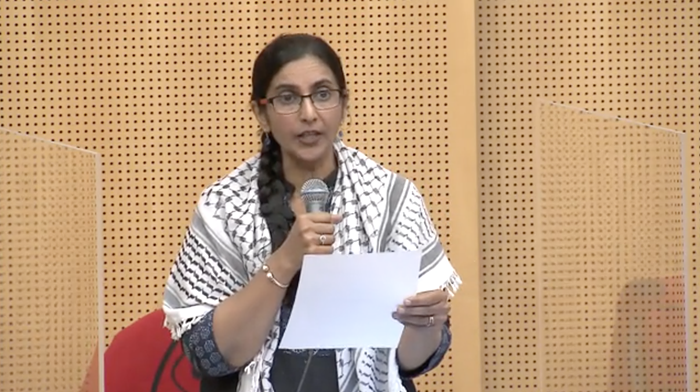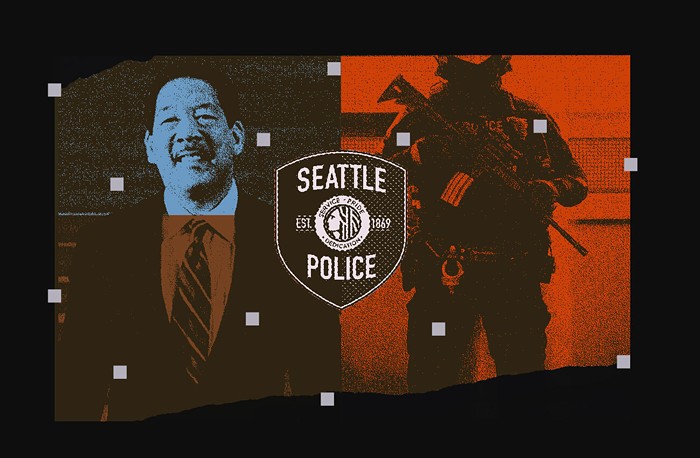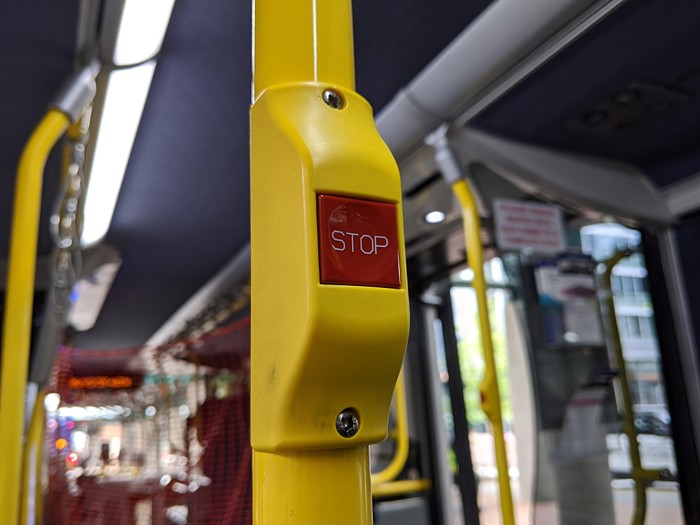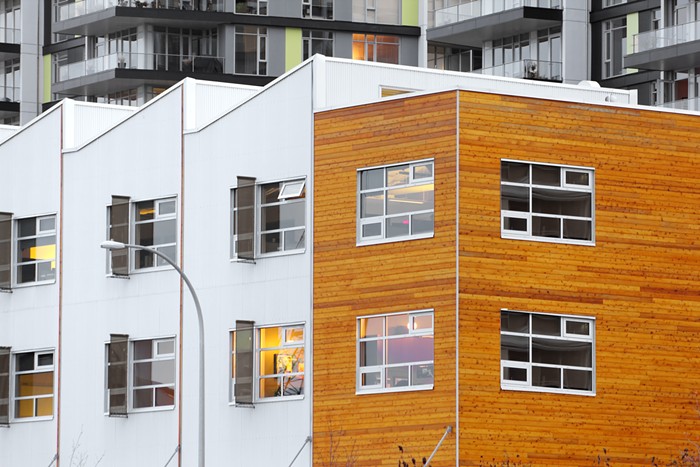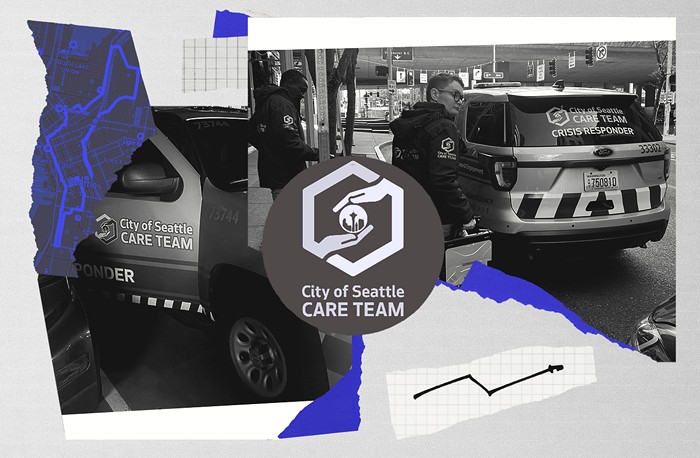
Over a year ago, the King County government pledged to change how they were incarcerating youth. The County Council passed a law that they claimed banned solitary confinement and King County Executive Dow Constantine created new regulations that he said would “reduce traumatization of youth in detention.”
But a new report obtained by The Stranger has found that the county is still regularly putting young people in isolation for extended periods of time and falling far short of the county's goals to provide resources and reduce the trauma of being incarcerated.
The independent report, which has not been previously published, found that the county had used solitary confinement 15 times during a five-month period and failed to document “why solitary confinement was used, how long it lasted, what/if any alternatives were attempted,” according to the January report.
The county’s solitary confinement law, which the council claimed would “ban solitary confinement for minors in detention,” requires isolation to only be used in instances where the person poses “imminent and significant physical harm” and when all other options have failed.
A spokesperson for Constantine declined to comment when reached Wednesday afternoon. Rod Dembowksi, a King County Council member who has spearheaded reforms relating to incarcerated youth, told The Stranger the report showed evidence of a “total delay and obfuscation” of implementing the law.
“It’s very disappointing to pass a law, have the executive [Constantine] tout a nation-leading reform by putting public health in charge of juvenile detention, and then a year and a half later see that we have ongoing racial disproportionality in terms of the use of solitary confinement and the use of solitary confinement period,” Dembowski said.
The monitor's report paints a bleak picture for youth incarceration in King County and makes a number of conclusions that show a widespread failure to implement multiple aspects of the law. The report showed the county:
• Continued to use solitary confinement despite the ban;
• Failed to accurately track data on the use of solitary confinement and the racial makeup of those who are put into solitary confinement;
• Failed to accurately identify youth when they are housed in adult facilities;
• Continued to implement policies that traumatized youth, increased anxiety and depression, and led two youth inmates to become suicidal;
• Failed to provide required educational programming and in some instances gave youth inmates only three hours of recreation and ten minutes of education a week.
The County Council plans to discuss the report at a Law and Justice Committee hearing on Tuesday, March 26 at 1 pm.
In addition to the new county law and executive order from Constantine, the county also agreed to end youth solitary confinement in a separate settlement agreement signed by the county in August 2018. In the agreement, the county agreed to ban solitary confinement for youth in almost all cases and pay $240,000 to four juveniles who were held in solitary confinement at the Maleng Regional Justice Center in Kent. Travis Andrews, an attorney with Columbia Legal Services who represented the children in that case, told The Stranger he was “very concerned” by what he saw in this newly released report.
“Our hope is that the county takes this as seriously as we do and hopefully we can move forward,” Andrews said. “I’m not sure what’s needed to make those changes, but in the meantime people are being damaged in the process. That’s our major concern.”
The report, conducted by a private contractor and juvenile justice expert Stephanie Vetter, includes interviews from incarcerated youth that paint a gruesome picture of youth incarceration in King County.
One kid told the monitor they were put in solitary confinement after their roommate accused them of doing “something sexual that I didn’t do,” according to the report. “’It’s December and I have been held in the ‘hole’ since September,’” the youth told the monitor. “I cannot sleep. I need something to help me sleep and not have nightmares. I don’t know when I’m ever going to get out of Restrictive Housing.”
Restrictive Housing is a term for solitary confinement.
A different youth told the monitor that they were “sent to the ‘hole’ for one week for a fight with another inmate.” While they were there they asked for educational support but only received one teacher for one ten-minute stretch, according to the report.
A separate youth said they were sent to solitary after an officer accused them of smelling like marijuana and the youth refused a strip search. The youth was in solitary for 14 hours until they agreed to the strip search, which did not find any marijuana.
Dembowski said the county has had ample time to implement the new policies.
“We even modified the legislation at their request, and they’ve not come to us in the intervening period and said we need more time, or we need more resources,” Dembowski said.
Dembowski said union members for the correctional officers told him that management was getting in the way of complying with the law.
“I met with representatives with the juvenile correctional officer’s guard’s guild and they’ve expressed frustration with their inability to comply with the law because of a lack of support from the management… They want to head in this direction and feel stymied,” Dembowksi said.
When a youth turns 18 they are automatically transferred from youth facilities into the general jail population in a process that the monitor identified as one of the most emotionally disturbing aspects of being held in jail as a kid. The county is supposed to provide support and orientation materials for the youth during this process, but the monitor found that many people were simply shuffled into the adult jail with little or no preparation. That led to two youths becoming suicidal, according to the report.
The report said the transfer process almost always occurs on the person’s 18th birthday and can take as long as 10 hours.
“Overwhelmingly, youth reported that their transfer from YSC to adult jail upon turning 18 was traumatizing and many described the process of intake at the jails as taking too long and producing high levels of anxiety and depression,” the report stated.
One youth who became suicidal after being transferred to an adult jail was unable to finish an interview with the monitor because of the jail conditions and their mental state.
“He was in a full suicide vest and refused an interview after he realized that the [correctional officer] was going to shackle and handcuff him during the interview,” the report stated.
A different youth told the monitor “no one prepared me for the jail experience” and he became suicidal three days after transferring. That youth was placed in solitary confinement for an unknown amount of time after he got in a fight with two other adult inmates. He told the monitor “you have to watch your back. You wake up and watch your back.” A separate youth told the monitor that an officer told them “just don’t be anyone’s bitch.”
Data collection is a significant problem for the jail staff, according to the report. The monitor found that the jail staff was unable to produce data on how often youth were held with general jail populations and failed to follow their own policies for identifying those youth.
The county’s solitary confinement ban includes a requirement that jail staff track how often and why solitary confinement is used, as well as the demographics of who is being kept in isolation. The jail staff failed to accurately do this, according to the report.
The monitor reviewed the collected data and found that it was “difficult to determine consistently why solitary confinement was used, how long it lasted, what/if any alternatives were attempted…” what kind of services were given to the youth and how the jail staff attempted to return that youth back to the general population.
Earlier reports showed that solitary confinement was disproportionately used on people of color, but this new report showed that jail staff has failed to accurately track the demographics of the youth put in solitary confinement.
“A deeper data analysis might reveal patterns related to the impact of restrictive housing on youth of color; however the total number of days of restrictive housing by race/ethnicity was not available at the time of this report,” the monitor said.
Constantine has previously celebrated his new youth detention policies as a commitment “to reduce traumatization of youth in detention, eliminate racial disparities in the juvenile justice system and advance the goal of zero youth detention.”
Dembowski said his one positive takeaway from the report was that it existed at all.
“The only thing that I’m happy about is that in the legislation that we wrote to ban solitary confinement for youth, that we required an independent monitor and reporting out on the implementation of this law. Because I don’t think we would have this information without those provisions,” Dembowski said.

